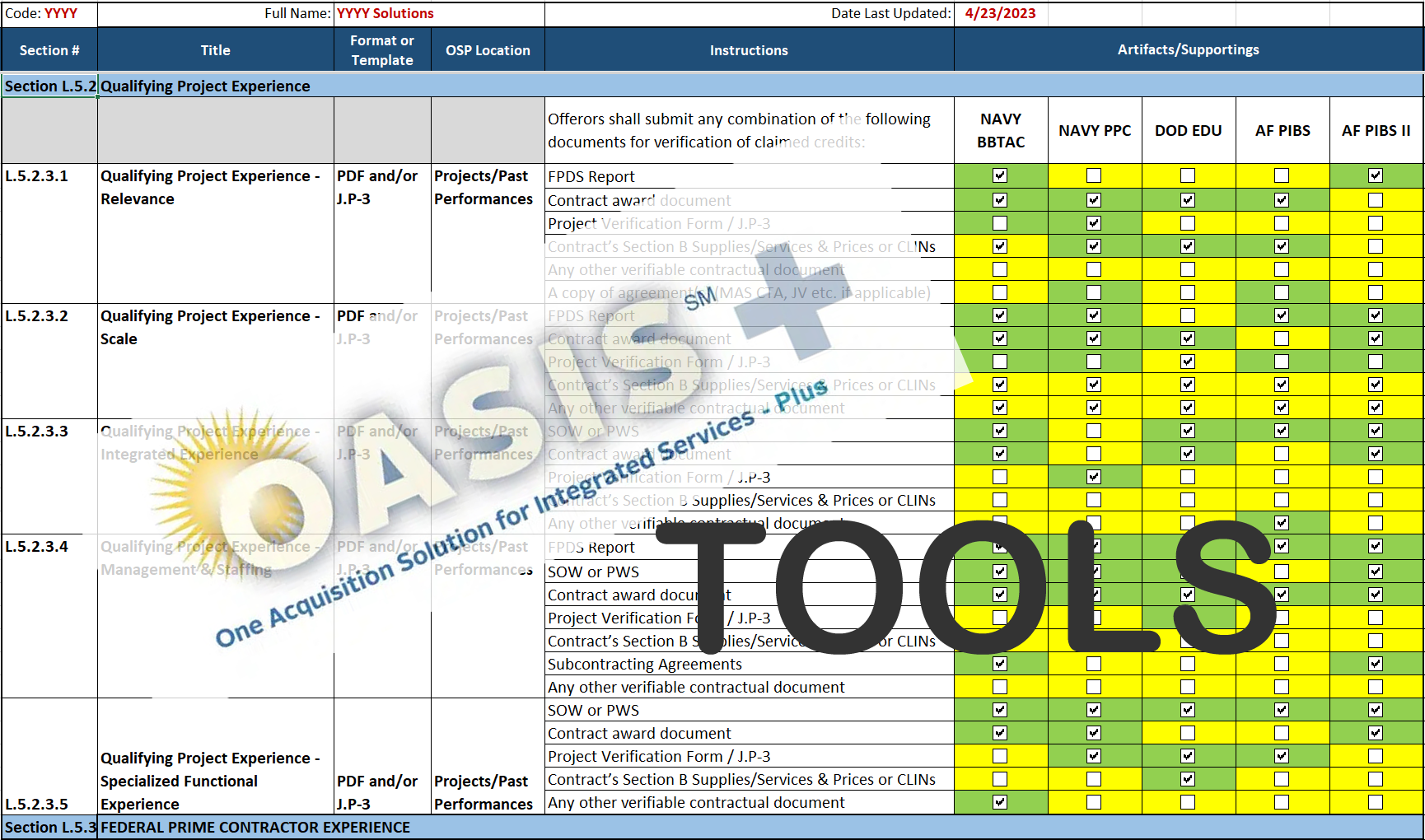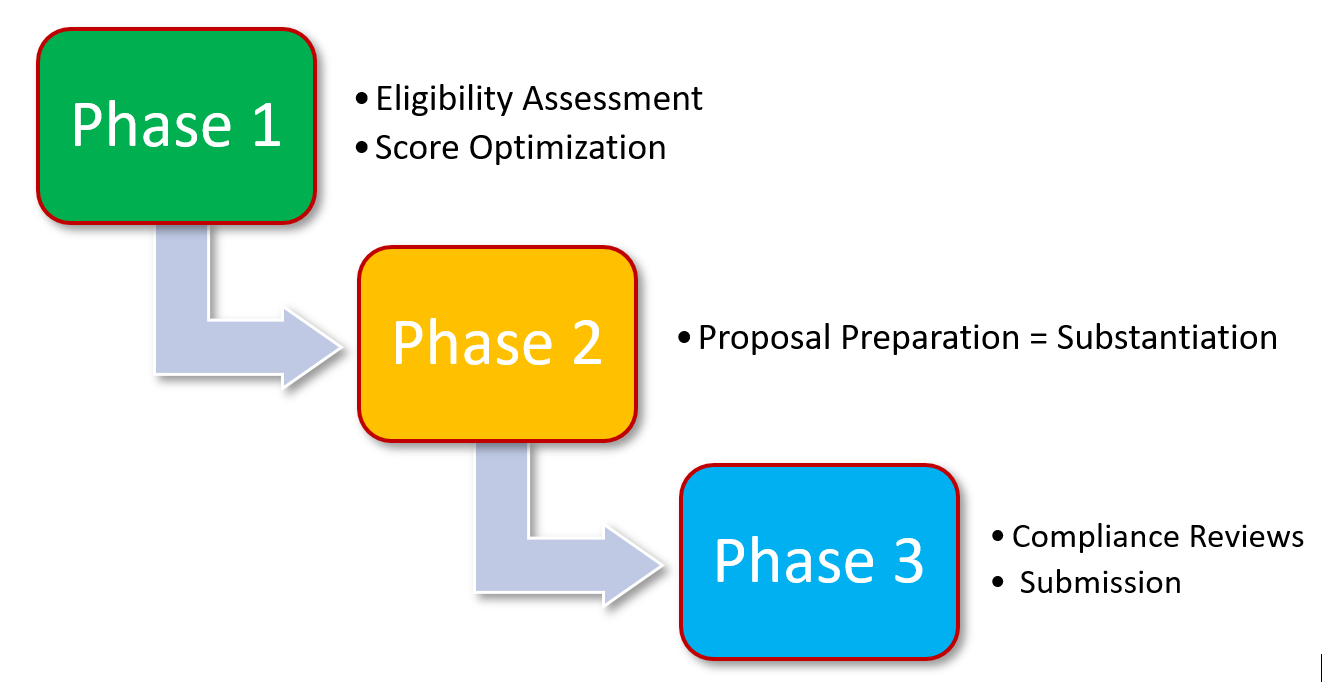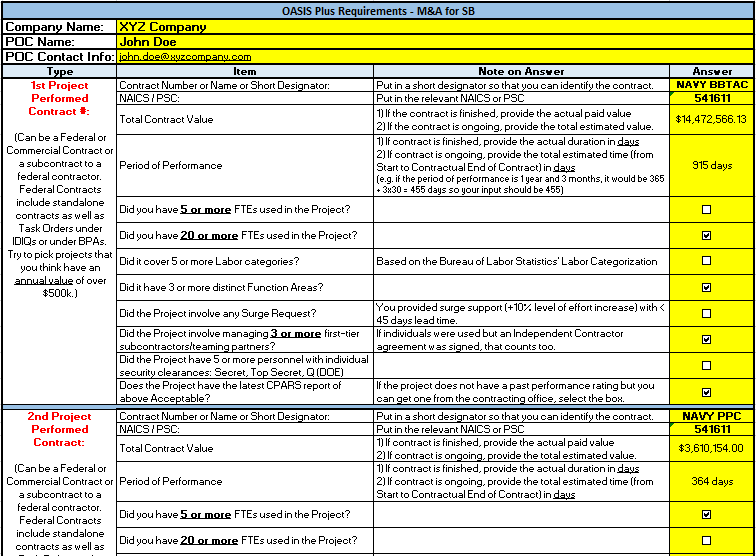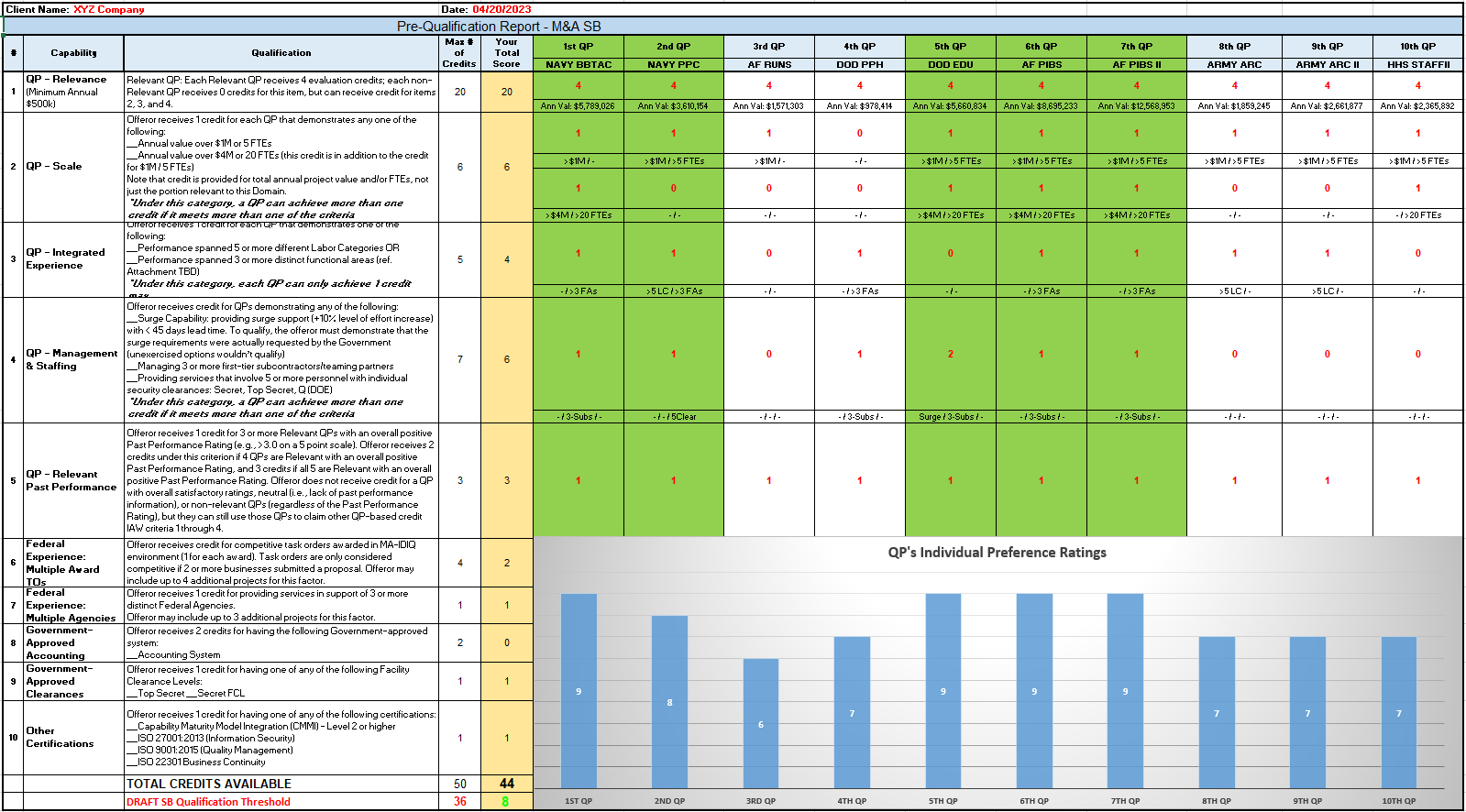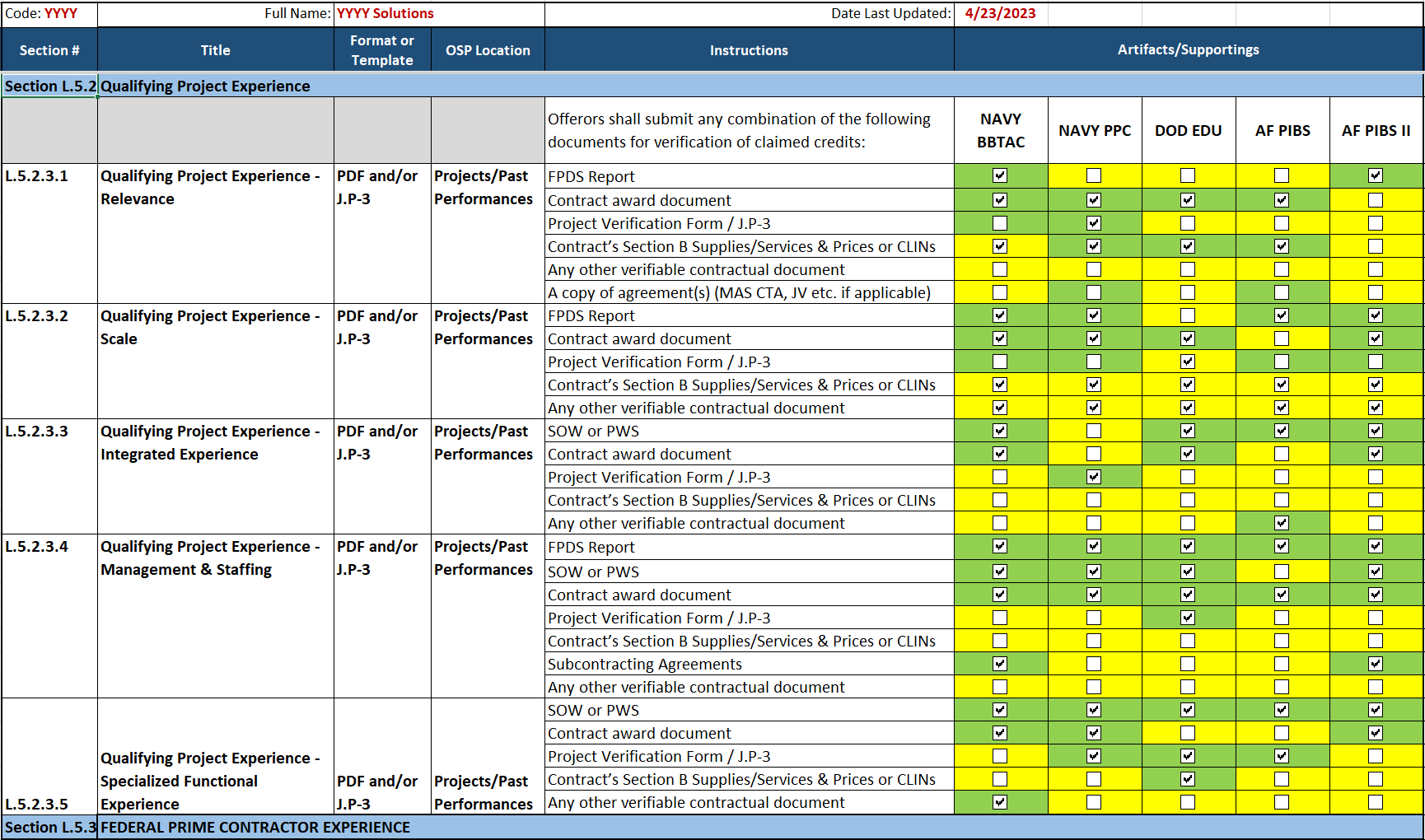.
What OASIS Plus Tools Do You Need to Prepare Your Proposal In-House?
Introduction:
The $60B+ OASIS Plus program is a GSA contracting vehicle that provides access to a wide range of professional services. However, preparing a quality and compliant submission to ensure a contract award can be daunting, especially for mid-size and large businesses doing the proposal preparations in-house. They might face a multitude of past-performed projects and variations in contract documents. Having the right OASIS Plus tools for each process phase is essential to ensure success in this program.
This article will discuss the tools needed for each phase of the OASIS Plus program. We assume that the reader has a firm grasp of the requirements, the scoring system, the Qualifying Projects (QPs), the Federal Experience Projects (FEPs), and the Systems and Certifications factors and how they play into making up the final score. (For further reading on the scoring system, refer to my webinars on the scoring system on our GDI Consulting website).
Phasing in OASIS Plus:
Before diving into the details of the tools you need, we need to mention that the tools you will utilize must align with the phase in which you are in the proposal preparation process. Don’t look for a magical tool that will solve all your problems. Develop tools specific to each stage of the process and expand on that.
The OASIS Plus bidding project essentially goes through three phases:
Phase 1 – Eligibility Assessment and Score Optimization
Here you decide which domains and tracks (UNR or SB) you want to go after and have a chance of success, which contracts are eligible, and which contracts to pick out of the pool of past performed projects to maximize your score.
Phase 2 – Proposal Preparation = Substantiation
At this phase, you have decided on the domains/tracks and know which contracts you want to use for each domain. Now you want to put the proposal together. In self-scoring RFPs, the proposal is essentially the substantiation of the score you came up with in Phase 1, using official contract documents. So, Phase 2 comprises putting together the proper contract documents as spelled out by the RFP to ensure that you can prove the score you claimed. Your tools should speak to this need.
Phase 3 – Compliance Reviews and Submission
In phase 3, you want to ensure that the prepared proposal (in phase 2) is fully compliant with the requirements of the RFP and that your actual submission to Symphony (GSA’s online portal for submission) goes through smoothly and without a glitch. Thus, the tools you use at this stage should also speak to the need for compliance and proper submission.
Tools for Phase 1:
Tool No. 1 – Contract Selection Tool
The first tool needed in Phase 1 is a contract selection tool. This tool should be able to dig into your archives and present the list of contracts that adhere to the requirements of OASIS Plus, such as annual value above the domain threshold, completed within the last five years, or ongoing with six months of performance, and correspondence with the “Auto-Relevant” NAICS/PSC codes.
We use an AI-capable tool that digs into the government database of federal contracts and extracts such information from the government side as needed. This AI software takes time (usually 24 hours to go through the entire database) but, in the end, provides a list of very specific past-performed contracts that our clients can use.
Such a tool is needed when you are a mid-size or large business with many contracts and/or decentralized offices, each responsible for different programs and contracts.
Tool No. 2 – Contract Profiler
Once you have the list of your possibly eligible contracts, the next tool needed is a contract profiler. This tool should help you profile the OASIS Plus required information for each contract. It would be best to establish which scoring factor and sub-factor applies to each contract, which is usually done in an Excel sheet.
We use a questionnaire-type form in which, for each contract, the total value, the PoP, and the NAICS/PSC codes are entered. The rest of the required information is presented as yes/no questions to facilitate completing the profiling of each contract quickly and efficiently.
When preparing your own tool, ensure that questions/titles should be listed per the scoring factors of each particular domain, as each domain has different requirements.
Tool No. 3 – Contract Score Analyzer
The third tool needed is a contract score analyzer. OASIS Plus allows you to provide only five contracts and get points for them, but what if you have more under that particular domain? Which contracts should you use? Should you pick the highest-value ones? Not necessarily. Sometimes a lower-value contract will bring you more points because it scores higher in the other sub-factors. Therefore, you need a tool to compare the total value of each contract and then select the best five. The tool must be able to score each contract independently and then compare them. This tool should then tell you which five will get you the highest score considering all the different subfactors involved. The tool we use performs an automatic selection of the best 5. You can also do this by observation alone, especially if you are uncomfortable using VBA or Excel formulas.
If you are going for multiple domains, you must prepare this scoring analyzer for each domain you are pursuing, as the requirements are different for each domain.
Tools for Phase 2:
Tool No. 4 – Substantiation Matrix
In Phase 2, you need a tool to assemble the proposal. The proposal is the contract documents required to justify the score you claim from Phase 1. Therefore, you need to know which documents are required to provide full substantiation. You need a matrix listing the documents required to prove the score claimed for each contract. Note that you should refrain from using the traditional compliance matrix approach. This is a different beast. Here, you need to state which documents are necessary for each QP or FEP specifically. You must list the required documents to substantiate your score for each score point on a case-by-case basis. This constitutes your Substantiation Matrix.
Tool No. 5 – Compliance Checklist
Compliance in form and content is the most critical issue to consider when preparing your submission. You must prepare a detailed Compliance Checklist, used in Phase 2 and Phase 3, to ensure full compliance with the RFP requirements in form and content. This includes proper highlighting and presenting the justifications and tagging required for Symphony submission. The Compliance Checklist should cover every section of the submission (QPs, FEPs, Systems and Certs, Administrative documents, etc.) in detail. It would be best if you prepared it so that you can do multiple iterations of compliance checks. We recommend at least two rounds of compliance reviews (by independent teams) before submission. The system you create must have space for notes for the compliance team so that the proposal team can amend and rectify the issues. The compliance team should then recheck their work.
Tools for Phase 3:
Tool No. 5 – Compliance Checklist
The same tool used in Phase 2 when preparing the proposal is also used in Phase 3 to ensure compliance before submission. Emphasis should be on the actual document-by-document tagging and substantiation procedures.
Tool No. 6 – Submission Checklist
You should create a submission checklist for the documents that need to be uploaded for each part of the proposal. It should cover each QP, FEP, Systems and Certifications factor, administrative documents, and requirements such as financial docs, etc. The checklist should allow for another round of auditing after you submit your proposal to Symphony. You need to ensure that the proper documents have been uploaded for each score factor and that all administrative documents are uploaded correctly and are seen by the Symphony System. Ensure that the total score calculated by Symphony corresponds with the score that you have calculated in Phase 1. This checklist is even more important if you submit for multiple domains and/or tracks (both SB and UNR).
Summary:
A successful proposal preparation requires the right tools to perform proper analytical work on contracts and a sound document management system in place. The tools needed for each phase of the OASIS Plus program were discussed in this article. By preparing these tools before delving into OASIS Plus, you can ensure a quality and compliant submission. This will certainly increase your chances of being awarded a contract.

